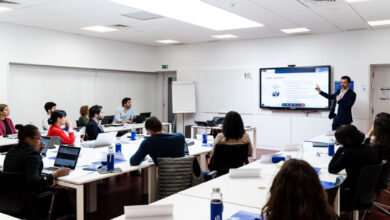Breaking the Mold: How This Entrepreneur is Transforming Global Industrial Landscapes

Opinions expressed by Entrepreneur contributors are their own.
You’re reading Entrepreneur Asia Pacific, an international franchise of Entrepreneur Media.
Ever notice how those big issues in today’s industries all seem tangled up? It’s not just about one thing – it’s like a bunch of problems all mixed.
And you know what? When you try to tackle ’em one by one, it feels like wandering through a maze. Fix one thing, and it kind of messes with the other, and you end up losing track while you’re trying to figure your way out. That’s why we need solutions that cover all the different sides of these issues, you know?
Romain Girbal, a French entrepreneur with a vast experience in the bauxite industry, believes the same. He emphasizes that to solve modern issues, we need to upgrade our game. Rather than picking one thing at a time, we need to look at the whole picture.
Getting the Whole Picture:
You know, these industrial issues aren’t just caused by one thing. They’re like a mix of problems that all work together. Think about pollution – it’s not only about smoke from chimneys but also about where materials come from and where they go when we’re done using them.
Solving pollution can increase operational costs that will cause financial problems. The financial problem can, in turn, imbalance supply and demand, which can later affect imports. You see, one thing can lead to the other if the whole picture is not taken into account. So, it’s smart to have solutions that look at all these sides.
Why One-Thing Solutions Fall Short:
According to Girbal, people have mostly tried to fix problems by looking at just one part of it. Like, they’d only care about saving money or using less energy. But that didn’t always work out well. Sometimes it made things worse, like when saving money meant treating workers unfairly or damaging the environment.
Similar was the case with the bauxite industry. As correcting one thing worsened the other, this industry has stayed stagnant for nearly 50 years without any significant change. But, now Girbal is trying to change the scenario.
With his company IB2, Girbal is pioneering an effort that tackles multiple problems of the industry simultaneously.
Due to IB2’s multifaceted approach, it is being claimed as the first major innovation in the bauxite sector. It improves efficiency, saves more on operational expenditure, and cuts down pollution as well. It proves why we require solutions that solve multiple problems at once.
Why We Love Many-Sided Solutions:
- Solving Everything at Once: When we use solutions that think about all sides of a problem, we can actually fix the whole thing, not just a part of it. So, it’s like hitting many birds with one stone!
- Being Ready for Anything: Industries change a lot, right? With solutions that look at all sides, we’re ready for surprises. If something unexpected happens, we can handle it better.
- Keeping Things Good for a Long Time: Solutions that think about everything are like the wise old owl. They make sure things stay good for a long time, not just for a little while.
- Getting Creative: Imagine you have lots of different tools to fix something. You can mix them up and find new ways to solve problems. That’s what many-sided solutions do – they use all kinds of ideas to find the best answers.
- Good Stuff Keeps Spreading: When we use solutions that work for many things, good things start happening in other areas too. Like if we save energy, we might also help the air get cleaner. It’s like a good deed that keeps growing!
Making Many-Sided Solutions Work:
Girbal believes that to implement such solutions, we need to:
- Team Up: Get people who know different stuff to work together. That way, we cover all sides of the problem.
- Talk to Everyone: Ask the people who care about the problem – workers, customers, and everyone else. Their thoughts are like puzzle pieces that help us see the whole picture.
- Plan for the Long Haul: Big solutions take time and effort. So, we need to be patient and stick with the plan to see real change.
So, next time you hear about a big factory problem, remember that it’s like a big puzzle with many pieces. To solve it, we need solutions that think about all the sides – like a superhero team for industry problems!



